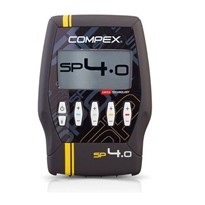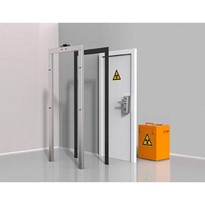The electromyographic (EMG) sign als of the paraspinal muscle s at the L4 vertebral level were assessed while participants stood in a neutral position with or without the orthosis.
The redesigned orthosis (Bio-Back Lumbar Orthosis, Medolutions, LLC) used in this study provided bilateral opposing forces on the lower back (lumbar) region posteriorly and the abdominal region anteriorly.
The posterior aspect of the orthosis was 5 inches tall to provide adequate support to the lumbar region. The anterior panel was rounded to comfortably fit an individual’s abdomen. The anterior front panel contained 3 slots on each side through which the connective straps could be tightened to a comfortable fit.
The posterior panel included a lumbar dome to comfortably support the lower ba ck region. The posterior lumbar panel also contained three slots through which the posterior portion of the connective straps could be affixed to the lumbar panel. Two connective straps were used to connect the anterior and posterior panels and the length of this strap could be adjusted to accommodate differences in body sizes between each individual.
The straps were available in one of two sizes: the standard straps (27” for each side) fit up to a 50” waist size, and the larger st raps (40” for each side) were available for waist sizes up to 78”. Each strap included a velcro hook tab and a removable velcro hook pad, which allowed the strap to be inserted through the panel slots and then reconnected back to the panel.
The electromyographic (EMG) signals of the paraspinal muscles at the L4 vertebral level were assessed while participants stood in a neutral position with or without the orthosis. When wearing the orthosis, the electrical muscle activity was reduced by 51.3% (p=.03) and 38.8% (p=.09) for longissimus and multifidus muscles, respectively.
Collectively, use of the orthosis reduced the activity of the paraspinal musculature by 46.2% (p<.05). This pilot study suggests that this novel orthosis may provide external stability to the spine and relieve muscle strain by reducing the recruitment of the paraspinal muscles.












